The Astronauts On The International Space Station Have Seen Things We People Wouldn't Believe
Have you watched this yet? German set designer and video artist Michael Konig used footage sent back from the International Space Station over the past three months to make an amazing high-definition, time-lapse video of the earth spinning from 240 miles away.
Some of the pictures are from the current Space Station mission, Expedition 29, manned by Satoshi Furukawa, Mike Fossum and Sergei Volkov. This clip of Furukawa being interviewed for Japanese television gives you a some idea of what it’s like for them up there. Watch Fossum’s cross necklace floating around in zero gravity, and listen to the excited oohs and aahs of the interviewers as Furukawa turns the camera out the window to show them what lightning looks like from beyond the earth’s atmosphere. And when the sun crests the curve of the horizon at the end, you learn how to say “Holy shit this is the most totally mind-blowing thing I have ever seen in my life” in Japanese. Or something pretty much like that.
And here is some soundless footage taken at night. Or, I guess, from this perspective, its less “night” than it is “while the earth is between the Space Station and the sun.”
What is that trail of green space-ghost mist? And those flaring beams of light that explode in the distance? Are those attack ships on fire off the shoulders of Orion? That’s my best bet.
Jane's Addiction 1987-1991, In Order

28. Sympathy
27. Rock & Roll
26. Chip Away
25. Thank You, Boys
24. No One’s Leaving
23. Of Course
22. Obvious
21. Idiots Rule
20. Trip Away
19. Standing In the Shower… Thinking
18. My Time
17. Had a Dad
16. Ain’t No Right
15. 1%
14. Ted, Just Admit It…
13. Pigs In Zen
12. Been Caught Stealing
11. Stop!
10. Classic Girl
9. Ocean Size
8. Mountain Song
7. Whores
6. Summertime Rolls
5. Up the Beach
4. I Would For You
3. The She Did…
2. Jane Says
1. Three Days
How Much More Does A Steak Dinner Cost Today?
How Much More Does A Steak Dinner Cost Today?
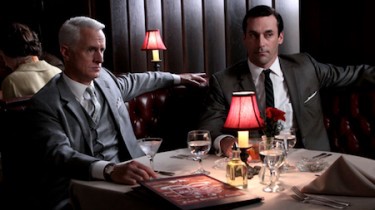
“Marlene Dietrich once said that if she heard an American man rave about a meal, she knew he must have eaten a steak,” says A Treasury of Great Recipes. Published in 1965, the book was written by Vincent and Mary Price (yes, that Vincent Price, or that one, maybe you remember). Price drops the quote in a section on great New York restaurants. And it’s not just the American men who thought this (though more on that below): restaurant critic Ruth Reichl in a 1994 steakhouse round-up wrote, “But there is one thing I have no doubt about: steak is a New York tradition, and when I go out to eat meat, I like to be reminded of that.” At Marlene, Vincent and Ruth’s behest, let’s talk about the steak dinner — specifically, the steak dinner in New York.
So it’s 1956. It’s not really 1956 of course, but we’re pretending. It’s 1956 and you’re flush — the raise came through and it was substantial, or you finally landed the office next to the corner office — so you and the boys from work are going out for a big old steak. (And you are a male. Weird to have to make that distinction, but the exigencies of history demand, in this context.) A sirloin. A salad, and maybe some shrimp cocktail. What’s the bill going to be? How much did you take out of the bank (as ATMs were but a dream, and credit cards were the province of a different class of people, at the time)?
You’re going to Jack & Charlie’s “21” on West 52nd Street in New York City, which is the name that the 21 Club then went by. You start with some steamers, at $2, and an onion soup gratinee, at an even dollar, and then dig into Broiled Sirloin Steak Flamande with Noodles, for $4.50. “21” still has that speakeasy vibe — mostly men, maybe the non-wife women that accompany them, and you just set yourself back $7.50 (which would be $62.56 in 2011 dollars).
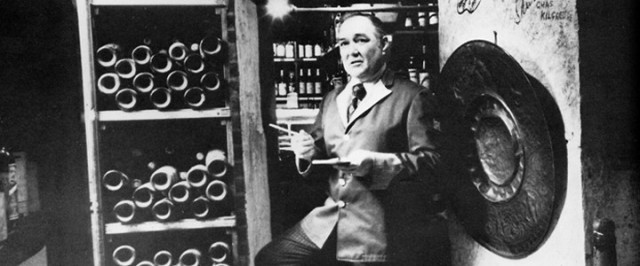
Now it’s now again. The VC deal finally closed, or it’s bonus time in the portions of Wall Street not occupied. Off to the 21 Club, which is still there on 52nd, still with the jockey statuary arrayed on the balcony over the entrance. Dinner is prix fixe now, so when you choose to start with the Ahi Tuna Tartare (coconut, lime, hearts of palm, Thai chilies and taro root chips) and the 21 Day Dry Aged Sirloin (with Yukon and purple potato gratin with blue cheese, sautéed tri color carrots and red wine reduction and a desert (which will have to be the equivalent of the onion soup you had 55 years ago), the bill will be $73.
Is that roughly ten-dollar difference significant? Have our steak dinners inflated at the same rate as, say, our candy? Or is it an aberration, and the steak dinner sector of the “delicious things” industry safe from economic pressures?
Let’s not think of the steak dinner as the timeless badge of the spendy meal, the reward dinner. True that it has become that in recent memory — in elementary school, the reward dinner for the Cox children was a trip to Ponderosa, and I don’t think that’s out of character for the day and age — but a long time ago, when men wore hats, the unadorned steak was the province of the chophouse and not the white-tablecloth establishments that were gaining traction. See, for example, the beefsteaks memorialized by Joseph Mitchell, where manly men would spend an entire night grazing on cuts of meat dropped on communal tables, washing it down with oysters and beer. It’s no accident that that certain historic steakhouses seem to be cut from the same cloth as speakeasies (or were, as was the case with the 21 Club, formerly ones).
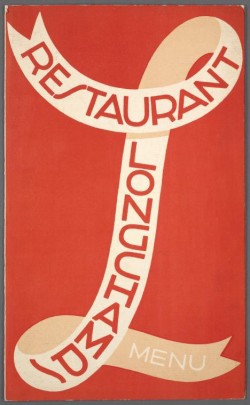
Early 20th-century restaurant chain Longchamps, was not a virtual men’s club, as were famous NY eateries like Lüchow’s and Toots Shor’s. It was a more refined sort of place, known for its Art Deco style (and popular with the ladies who lunch, who were not generally present in the chop houses of the time). But they did offer a steak to the hungry: in 1938, a Sizzling Sirloin Platter was $1.95. And if you start off with a Fresh Crab Meat Cocktail and a Fresh Endive Salad with Roquefort Cheese Dressing at $.65 apiece, and you’ve got a bill of $3.25 before dashing off to a night at the Bijou (or $52.30, in 2011 dollars).
These steaks come from cows, large contiguous swaths of cows, broken down into table- to single-serving portions, so it’s tempting to look at whether or not the price of a cow has gone up or down in similar ways. We will resist that. Dining is an experience that has to do with so much more than the cost of ingredients, labor, real estate, etc. Certainly fluctuations of the mass production of cows-for-eating affects the cost to the end-user (cf. this
McRib inquiry), but we are speaking more generally of that experience of that peculiar niche of culture that is restaurant dining, with others, in public, attended to in a fashion that is not usually the fabric of the daily life.
One of the difficulties of researching this is that old menus are not exactly easy to find. There are some scattered on the Internet, but should you insist on looking for a specific restaurant in a specific year, your chances plunge. But A Treasury of Great Recipes, which we discussed earlier? It’s a big book, definitely Treasury-sized, with full-page full color photos, raised bands on the spine, a sober gilt design on the cover and a ribbon stitched into the binding with which to mark your place. And in addition to the amiably florid, ascot-wearing descriptions of the jet-setting of the Prices, and name-dropping anecdotes such as the Marlene Dietrich quote above, the book reproduces the menus of the restaurants that contributed recipes. And as it was published in 1965, we have a resource (as well as an awesome conversation piece any kitchen would be lucky to have on its bookshelf).
So from this tome we know that Sardi’s, before it became more widely known for anachronistic Broadway kitsch, had an Alaska King Crab Cocktail for $1.75, a Spinach Salad with Bacon for $1.25, and Roast Prime Ribs of Beef Au Jus with Baked Idaho Potato for $4.85. (Also, the Sauce Maison was 25¢ per person.) And across the East River, downtown Brooklyn’s landmark Gage & Tollner was more of a straight-up chophouse, where the meats were coal-grilled and the waiters wore service emblems denoting years of service. A Crabmeat Cocktail was $1.90, a cup of Green Turtle Soup was $.75, and the Sirloin Steak was $6.00 (or $11.00 for two). In 2011 dollars, Sardi’s cost $58.34 (with Sauce Maison), and Gage & Tollner $62.30
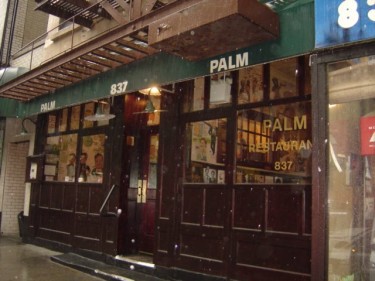
The transformation of steak and potatoes from trenchermen’s delight into fine dining is relatively recent. I spoke to John Mariani, food columnist for Esquire and Bloomberg News and author of numerous books, for insight. According to Mariani, the shift happened in the mid-1970s. “Before that, the model, the paradigm, was the steak houses on and around Second Avenue in New York, such as The Palm and Christ Cella. These were not rough, tough places, but rakish places, populated almost solely by newspapermen.” Mariani tells of the first time his editor at the time, Clay Felker, took him to The Palm in the early ’70s. “I thought I entered into a world, a very masculine world, where quite literally you couldn’t get into unless you knew somebody.” But then a new generation of restaurateurs began opening steakhouses, such as Alan Stillman. Stillman was already in the restaurant business, having opened (and eventually selling) T.G.I. Friday’s, often credited as the first singles bar. He founded Smith & Wollensky in 1977 on the corner of 49th and Third, which had the affectation of the classic chophouse but with modern flourishes, such as attention to the wine list. “The only way to distinguish yourself from those New York steakhouses was to become a little bit more refined,” says Mariani, which is what Smith & Wollensky, and similar places starting at the time, did, and all of a sudden we had a crop of steak joints to which men would take their wives and kids. Not quite haute cuisine, but approaching it. And not coincidentally, the men-only (or the men-and-their-molls-only) fog began to dissipate — as evidenced by Reichl’s sentiments years later.
So, thanks to the December 18, 1978 issue of New York Magazine, let’s see how much this new generation of steakhouses were charging. Sparks, recently having moved uptown to challenge Steak Row, was asking for $14.95 for the boneless sirloin broiled with lemon pepper, $.75 for hash browns and $1 for the salad, while The Palm charged $14 for the sirloin, $2.50 for the hash browns and $2 for the salad. As a price war was raging, initiated by Sparks’ move, we’ll use The Palm for purposes of comparison, which converts to $64.38 in 2011 dollars.
And from the Ruth Reichl story, which is a true mash note to the steakhouses of note, she lists the prices of ten steakhouses from 1994. Sadly, only from one does she include the prices of sides: Christ Cella, a venerable and now-gone Steak Row stalwart: $29.95 for a New York sirloin, $19 for shrimp cocktail and $9.75 for hash browns. That’s a 2011 total of $89.87.
And for another current example, perhaps more traditional steakhouse than 21, let’s visit the Palm again where we will, as Sam Sifton recommends, “Just ask for the steak after some Gigis and a crab.” The East Coast Gigi salad is $15.50, the crabmeat cocktail $19.90 and the Prime Porterhouse $58.00, for a total of $94.40.
Where does this leave us? (And please note that the omission of any steakhouse, historical or current, is not intended as a slight — I’m noticing that my two favorites, Peter Luger and The Strip House, are not included, so there’s that.) The rundown:
Longchamps (1938): $52.30
Jack & Charlie’s “21” (1956): $62.56
Sardi’s (1965): $58.34
Gage & Tollner (1965): $62.30
The Palm (1978): $64.38
Christ Cella (1994): $89.87
The 21 Club (2011): $73.00
The Palm (2011): $94.40
I was tempted, early in this examination of relative prices, to think that the steak dinner was impervious to the forces of inflation, that they could be thought of as a standard unit that keeps pace with increases in the cost of living, even a unit that could be extrapolated as a certain portion of a week’s wages. The data does not support this. In fact, between 1938 and now (referring to the Palm — it’s difficult to trust a prix fixe for these purposes), we’re looking at an (unscientific) increase of 57% — pretty steep. Though also note that the increase really gathers steam in the past twenty years, and that before that, the price was holding relatively steady for forty years.
Of course, as we learned from John Mariani, the steak dinner has changed. Maybe the broadening of the appeal of the steak dinner away from the exclusive province of sawdust and testosterone has enabled the purveyors of steak dinners to seek a more attractive profit margin. Or maybe this is a trend in restaurants in general. Or in life. But yes, your steak dinner costs more than your parents’ at your age, and more again than for your grandparents before them.
And you may be tempted, after reading this, to rush to your closest chophouse for a traditional meal, despite the encroaching expense. In took about three archival menus to render me famished. But remember that the prices quoted do not include tax or tip (or, heaven forfend, adult beverages), so prepare for sticker shock at the end of the evening. Perhaps better to hit the butcher and make a night at home of it.
Brent Cox is all over the Internet.
Historic “21” photo courtesy of 21 Club; Palm photo by Jmichcock, via Wikimedia Commons.
Lethem v. Wood: Whose Fault Is It, Anyway?
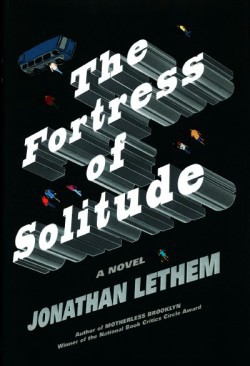
In “My Disappointment Critic,” the essay excerpted in the Los Angeles Review of Books from Jonathan Lethem’s new collection, the author defends his book The Fortress of Solitude (eight whole years later!) against what he considers to be an unfair review written by the august literary critic James Wood.
“Why, I hear you moan in your sheets, […] violate every contract of dignity and decency, why embarrass us and yourself, sulking over an eight-year-old mixed review?” Lethem asks in the very first paragraph. The fairness of this question is evident in the general response to the essay so far, e.g. this comment: “Nothing more tedious than authors responding to critics.”
The contretemps is more complicated than it looks, and also reveals the potential for a better way for authors, readers and critics to communicate: by reading one another both closely, and generously.
The expat Brit Wood is the biggest mahoff there is in literary-critical circles. He’s a staff writer at The New Yorker, and a part-time professor at Harvard. I guess he won the Berlin Prize, and is spending a year in Germany just now. And he’s a big snob, all right. Much as he may say he admires Burroughs and Kerouac, they are conspicuously absent from his book How Fiction Works. It’s Bolaño, Pushkin, Larkin, Nabokov, Tolstoy, Saramago and the like who really ring his bell. It was Wood who coined the pestilential phrase “hysterical realism” that had a lot of people (myself included) hissing like furious cats, back at the turn of the century.
So in the essay, Lethem says that he was so steamed about Wood’s review of his book that he dashed off a scathing letter to him right then and there. Wood responded with a postcard basically saying, “I’m sorry you felt that way… I liked the book so much more than any of your other work.” This drove Lethem up a tree. He goes on to make the familiar and not entirely unsound point that Wood writes like “an aristocrat who never really expected those below him to understand the function of the social order.”
I very much enjoyed The Fortress of Solitude. Not as much as the audiobook of Motherless Brooklyn, read so dazzlingly by Steve Buscemi, but a lot. So I went along and looked at Wood’s review of The Fortress of Solitude, steeling myself for the usual apoplexy. Imagine my surprise at finding Wood to have written a magically beautiful review; he is right as rain, too, both about the faults of Lethem’s book and about its glories. For he, too, really did love the book a lot; I don’t think I’ve ever agreed with him so perfectly. Wood gives The Fortress of Solitude four stars out of five, I would say. It is Lethem, it turns out, who totally misread Wood.
Lethem’s fidelity to the child’s eye is finely maintained; he skillfully captures the allure, the menace, and the shame involved in discovering, for the first time, that another boy is stronger than oneself. Even as an adult, Dylan will never successfully repress that amalgam of emotions whenever he confronts Robert Woolfolk. Subtly, Robert Woolfolk is almost always referred to in the novel by his alienatingly full name — a good example of the ways in which boys may fail ever to grow into men. As far as the world of this novel is concerned, Robert Woolfolk will always be “Robert Woolfolk,” the stranger who turned up one day on Dean Street; he is named but never possessed, never gains the familiarity of first-namedness. […]
If there is an air of being cleverer than little Dylan, there is never an air of being cleverer than Dylan at Dylan’s expense. If the prose turns analytical, then the subject of the analysis remains fresh and uncharted to most of us. Above all, we share the feeling, often infectious, that Lethem himself wants to work this mass of codes out, that he is exploring it anew. There is a genuine atmosphere of cognitive novelty; Lethem manages to combine childish innocence and adult knowingness (not just childish knowingness) in ways that ought to fail but invariably delight and intrigue.
It’s hard to imagine anyone not being thrilled with such praise. With such attention, even. Wood is a famously careful, close reader.
Lethem has two complaints about this review. One is that Wood “failed to register” the fact that the characters in his book find a magic ring that allows them to fly and to be invisible. Nothing that Wood wrote necessarily indicates such a failure, and I did not find that the omission of this part of the story detracted from Wood’s review. The magic ring in The Fortress of Solitude is somewhat of a MacGuffin; the book isn’t really about the ring at all, at least not in the way that The Lord of the Rings is about a ring. Its discovery and its subsequent fate may shape the plot some, but the ring doesn’t alter the book’s characters very deeply, which makes the supernatural part seem tacked-on in a way. This failure of the ring’s magic is maybe the most frequently-made criticism of the novel (cf. A.O. Scott in the Times, and John Leonard in the NYRB.)
The second criticism, which the author says stuck even worse in his craw, is this:
Wood complained of the book’s protagonist: “We never see him thinking an abstract thought, or reading a book … or thinking about God and the meaning of life, or growing up in any of the conventional mental ways of the teenage Bildungsroman.” […] My huffy, bruised, two-page letter to Wood detailed the fifteen or twenty most obvious, most unmissable instances of my primary character’s reading: Dr. Seuss, Maurice Sendak, Lewis Carroll, Tolkien, Robert Heinlein, Mad magazine, as well as endless scenes of looking at comic books. Never mind the obsessive parsing of LP liner notes, or first-person narration which included moments like: “I read Peter Guralnick and Charlie Gillett and Greg Shaw…” That my novel took as one of its key subjects the seduction, and risk, of reading the lives around you as if they were an epic cartoon or frieze, not something in which you were yourself implicated, I couldn’t demand Wood observe. But not reading? This enraged me.
That is not quite fair on a number of levels. First, here’s the original quote from Wood:
We never see him thinking an abstract thought, or reading a book (there is a canonical mention of Steppenwolf, which is just more cultural anthropology, and just about it for literature in Dylan’s life), or encountering music that is not the street’s music, or thinking about God and the meaning of life, or growing up in any of the conventional mental ways of the teenage Bildungsroman. There is no need for Lethem to be conventional, of course; but there is a need for Dylan to have outline, to have mental personality.
So Lethem’s response misses the main point, which is that his hero evinces a lack of “mental personality.” Okay, let’s go back to the book and see about this long list of seminal authors using our handy ebook search feature.
That Dylan Ebdus doesn’t read is, in fact, a totally fair criticism. He more like mentions things he’s read, in that kind of pleasurably in-group way familiar to readers of modern literary fiction. Dylan groks things. There is a cape, “cut out of a worn Dr. Seuss bedsheet featuring A Lion Licking A Lemon Lollipop”; later, as a frantic, cratering adult, he lists the many things he needs, including a Bloody Mary and a Thneed. None of that is what James Wood meant up above by “reading a book,” viz., delineating a developing “mental personality.” Nothing really happens to Dylan as a result of his reading — what Wood is feeling the need of — at least, nothing that we can see.
I must say I’m with Wood on the whole idea of a “mental personality” being a prerequisite for a compelling character in fiction. That doesn’t necessarily come from reading books, as he observes. It’s like your mind’s hand in the hand of the character’s mind, progressing through ideas together, trying things out, changing.
The most striking example of Dylan’s intellectual hollowness comes when his father, Abraham, nervously gives Dylan a copy of Neural Circus, a comic book which Abraham describes as “my first published book”; he is very aware of his son reading it as he prepares dinner:
Dylan didn’t look up as Abraham entered. The kid read books like he was engaged on some sort of scavenger procedure, scowling in concentration, turning pages at improbable speed while he flayed away the inessential flesh of prose and inspected the skeleton of story, the bare facts or crucial nonsense. Dylan Ebdus didn’t read, he filleted.
But Dylan never reacts to the book after that, either inwardly or outwardly, other than to say to his father, “Not bad.” That is it, that’s all. It makes no sense, given the keen, weird intimacy that waxes and wanes between father and son throughout the book. I understand that the detachment of Dylan Ebdus is one of the main features of this story: “reading the lives around you as if they were an epic cartoon or frieze, not something in which you were yourself implicated.” What’s missing for Wood (and it was missing for me too, I am not gonna lie) is an articulated understanding of how Dylan’s inner world is altered by his experiences.
And by the way, if that is what Lethem wants us to see, a complicated thing and not a simple, obvious one, isn’t the book itself a “demand” that we see it? Whose fault is it, if we don’t?
Even weirder, we later (years and years later) learn that Abraham Ebdus never read Neural Circus, not ever; he found even the title “distasteful,” he says. So the original intensity with which Abraham watched his son reading the book kind of makes no sense, either; Abraham had provided only the book’s cover art. Maybe the description of Abraham’s keen interest in his son’s reading is also intended somehow to indicate the passage of that distant frieze? Like father, like son? If so, big deal! It really drove me kind of nuts.
So, to back off a bit. Lethem is asking, legitimately, that we readers confront his work on its own terms. That in order to give a “good faith” reading, we must give this honest attention to what is being said on its own merits. His essay shouldn’t just be dismissed as petulant, egotistical whining. A lot of what it says is true. But the deeper implication here is that the author James Wood, also, should be confronted on his own terms. This, I think, Lethem has failed to do.
About books I’m Quakerish, believing every creature eligible to commune face-to-face with the Light; he’s a high priest, handing down sacred mysteries. To one who pines for a borderless literary universe, he looks like a border cop, checking IDs. The irony of Wood’s criticisms of Bloom is that Wood’s own “narcissism of minor difference” looks unmistakable: Wood is a critic whose better angels are at the mercy of his essentialist impulses.
Where Lethem goes wrong is in supposing that he can dictate or control the way people are going to read his books according to some higher, more democratic and less “essentialist” wisdom, because yes, he may mock Wood for supposing himself “a high priest,” but what is Lethem doing if not setting himself “above”? Lethem himself is a high priest, of that higher wisdom that honors comic books along with Dostoevsky. Let me be clear, I agree with him, so far as that goes. All literature can and maybe should be judged on the same plane; there is no such thing as a “canon.” That inclusionism means including James Wood, is the thing. As writer, and as reader, too. If we’re including, that means including the high as well as the low.
Finally, it’s not quite fair to suppose that it’s the reader’s job and his alone to come over there and “understand” it all. And it isn’t “essentialist” to ask that the author’s point be made clearly. This “punitive parochialism” that Lethem accuses Wood of, might it not just be the way the guy reads, legitimately, honestly, and isn’t it a legitimate part of his “parochial” expectation that you not write in shorthand? That you come his way, at least some?
You have to wonder how readers of the future are going to handle reading books like Lethem’s, that require such a deep, rich pop-cultural education even to halfway fathom what is being said. In a way they are asking as much or more of their readers than James Wood is: even today, not everybody has read Robert Heinlein andDr. Seuss and understands the significance of quoting Brian Eno.
To the extent he was able, Wood gave Lethem a fair shot. He is a super-demanding reader, not a yes-man or a pushover, but Lethem could rest assured that this was a well-prepared reader who was going to pay serious attention. Dude does not phone it in. There is no finessing that, much as one may (violently!) disagree with Wood a lot of the time.
The best part of Wood’s review, the really interesting part, is where the process is working, for both writers: where Lethem’s book works for Wood, and Wood is describing, with such sensitivity and grace, his pleasure for us. This speaks to the idea of inclusion, of including readers and critics, including authors, in the whole cultural practice of reading and understanding; and honoring all in whatever limitations we may respectively bring. To find the place where we can agree and enjoy good things together. Contrary to popular belief, it is not the carping or snark that is the most fun and interesting element of good criticism, it is the moment of clarity. The hand-in-hand moment.
From comics, Mingus leads Dylan to the cartoonish art of graffiti, to the world of the “tag” (the artist’s logo) and the “top-to-bottom burner” (a train or subway car covered from top to bottom in spray-painted letters and images). In a marvelous passage, Mingus takes Dylan to the Brooklyn Bridge, to show him the imperially high spot on one of the towers where two kids have already signed their tags:
Mingus showed the way. They circled under the onramp to find stone stairs up into the sunlight of the bridge’s walkway, then started across, over the river, traffic howling in cages at their feet, the gray clotted sky clinging to the bridge’s veins, Manhattan’s dinosaur spine rotating into view as they mounted the great curve above the river. The walkway’s slats were uneven, some rotten. Just an armature of bolted wire lay between Mingus and Dylan’s sneakertips and the pulsing, glittering water. The bridge was an argument or plea with space … the two of them stood in awe, apes at a monolith, glimpsing if not understanding their future.
In such moments, Lethem persuades us to join his own childish awe, and makes glistening even for those who never spilled a drop of graffiti the excitement of the vandalizing urge. Lethem’s prose is distractingly uneven. It can be superb.
Related: What Makes A Great Critic?
Maria Bustillos is the author of Dorkismo and Act Like a Gentleman, Think Like a Woman.
Rick Perry Too Pretty To Be That Stupid
Would more people cut Rick Perry some slack if they realized that the dude is kind of old? Sure, why the hell not.
Raekwon, Capone-N-Noreaga, "Chupacabra"
It’s nice when your favorite artists make a new thing and it seems like they’ve tapped into your thoughts and found out exactly what you would have wanted them to make and were like, “Hey, Dave, I know you and the other folks at The Awl really love the legendary chupacabra (the mysterious, cryptid vampire that terrorizes livestock). And even though we all know that there’s no way that the things actually exist, and it’s just that people get freaked out when they see a dog with a skin disease, and that the whole thing is just the result of some lady with a vivid imagination seeing Natasha Henstridge in Species in 1995, we love you, and we want to do everything we can to make you happy. So it says here that chupacabra is real, and it’s on that rah-rah.”
Old Penises Covered In Doodles
What kind of designs did prehistoric European men choose when they scarred, pierced and tattooed their penises? I don’t know, because I am too busy clutching my own in horror. Somebody click through and report back.
The Awl's Noted Pork Arbitrage Theorist Willy Staley On Bloomberg TV
I guess my favorite part of this Bloomberg TV segment on our McRib v. pork market exposé (besides the fact that they talked to actual pork futures analysts!) is when they bring McRibs down to Occupy Wall Street. (That really happened!) I’m guessing they just didn’t show the part where the vegans threw them back in the producers’ faces? TV is amazing.
Eleven Eleven Eleven

Eleven eleven eleven eleven eleven eleven eleven eleven eleven. Eleven eleven eleven eleven eleven eleven eleven eleven eleven. Eleven eleven eleven eleven eleven eleven eleven eleven eleven. Eleven eleven eleven eleven eleven eleven eleven eleven eleven. Eleven eleven eleven eleven eleven eleven eleven eleven eleven. Eleven eleven eleven eleven eleven eleven eleven eleven eleven. Eleven eleven eleven eleven eleven eleven eleven eleven eleven. Eleven eleven eleven eleven eleven eleven eleven eleven eleven. Eleven eleven eleven eleven eleven eleven eleven eleven eleven. Eleven eleven eleven eleven eleven eleven eleven eleven eleven eleven. Eleven eleven eleven eleven eleven eleven eleven eleven eleven. Eleven eleven eleven eleven eleven eleven eleven eleven eleven eleven. Eleven eleven eleven eleven eleven eleven eleven eleven eleven. Eleven eleven eleven eleven eleven eleven eleven eleven eleven. Eleven eleven eleven eleven eleven eleven eleven eleven eleven. Eleven eleven eleven eleven eleven eleven eleven eleven eleven eleven. Eleven eleven eleven eleven eleven eleven eleven eleven eleven.

Alternately: One one one one one one one one one one. One one one one one one one one one one. One one one one one one one one one. One one one one one one one one one one one. One one one one one one one one one. One one one one one one one one one one. One one one one one one one one one. One one one one one one one one one. One one one one one one one one one one. One one one one one one one one one. One one one one one one one one one. One one one one one one one one one. One one one one one one one one one. One one one one one one one one one one. One one one one one one one one one. One one one one one one one one one. One one one one one one one one one. One one one one one one one one one. One one one one one one one one one. One one one one one one one one one. One one one one one one one one one. One one one one one one one one one one. One one one one one one one one one one. One one one one one one one one one one.
Germans Like Fake Meat

“He goes on about the ersatz food in Germany. He describes ‘meat made of pressed rice boiled in mutton fat (and finished off with a fake bone made of wood); tobacco made of dried roots and dried potato peel; shoes soled with wood.’ There are, he notes, ‘837 registered meat substitutes permissible in the production of sausages, 511 registered coffee substitutes.’”
— From Dwight Garner’s review of Peter Englund’s The Beauty and the Sorrow comes an answer as to why the McRib sandwich stays on the menu all year ‘round at McDonald’s restaurants in Germany: Germans got used to fake bone shapes in their food during the first world war. The book sounds absolutely terrific, by the way, and its title has gotten me thinking about something that I was thinking about recently after reading a book by Lorrie Moore.
Which is better, The Smithereens’ “Beauty & Sadness”…
or the Replacements’ “Sadly Beautiful”?
Listening to them here now, I think the Replacements. And it’s not really a contest. I loved the Smithereens in high school. (And they’re still going strong! They’re playing York, Pennsylvania on Sunday.) They’re from New Jersey, so I suppose I might be biased. But their Especially For You album, from 1986, is just front-to-back excellent. “Beauty & Sadness” is maybe too much of a copy Beatles bite, though. And as much guff as all the songs on All Shook Down get, “Sadly Beautiful” is one the best ballads Westerberg ever wrote.
